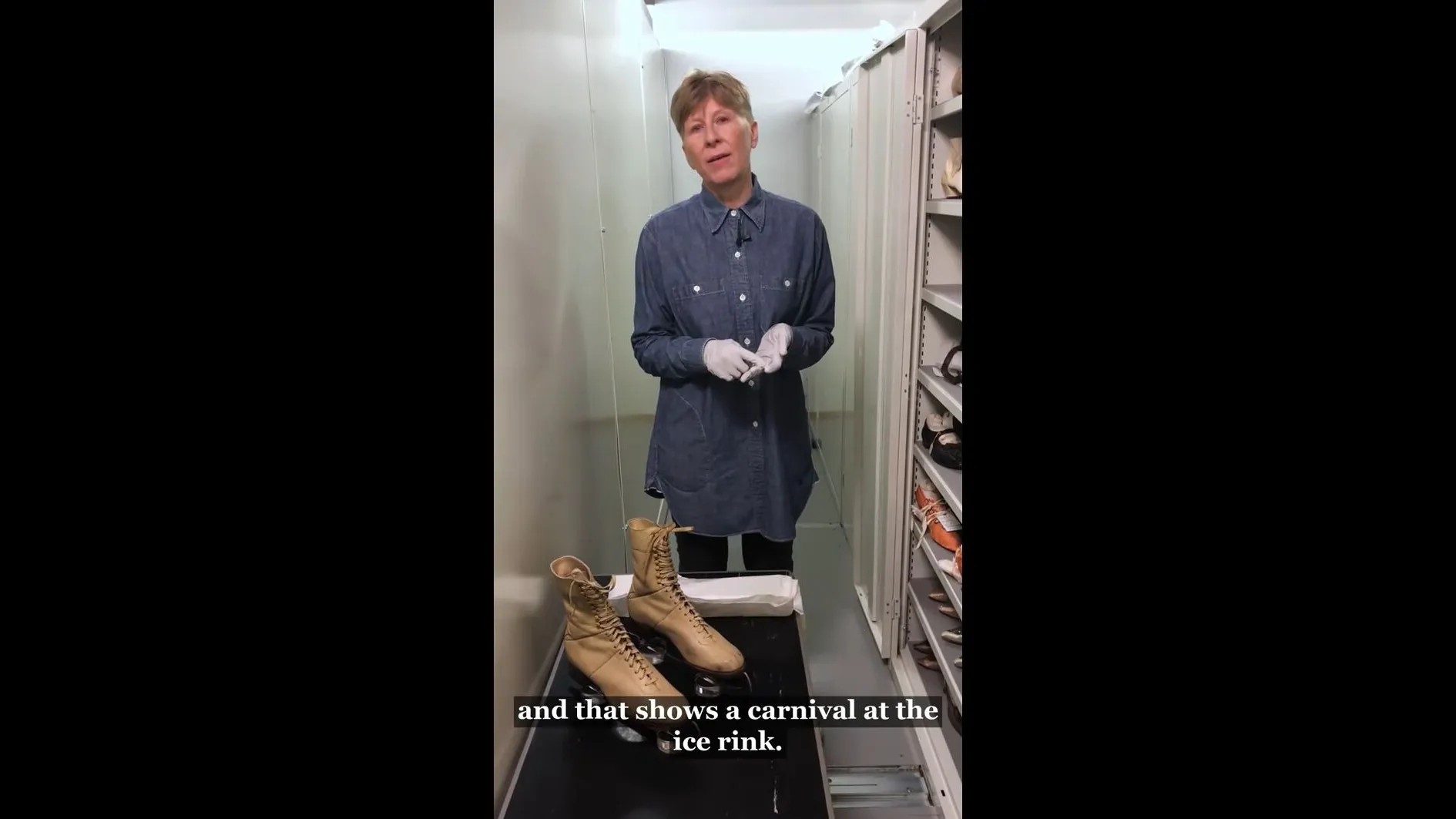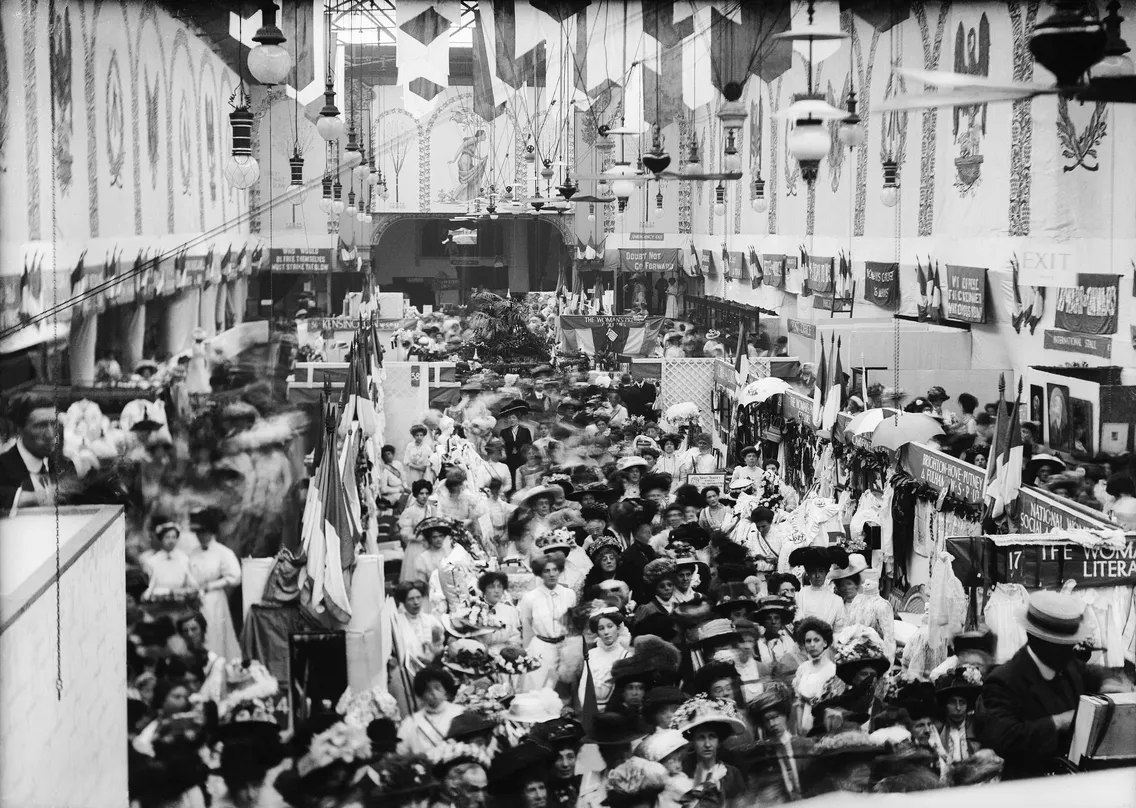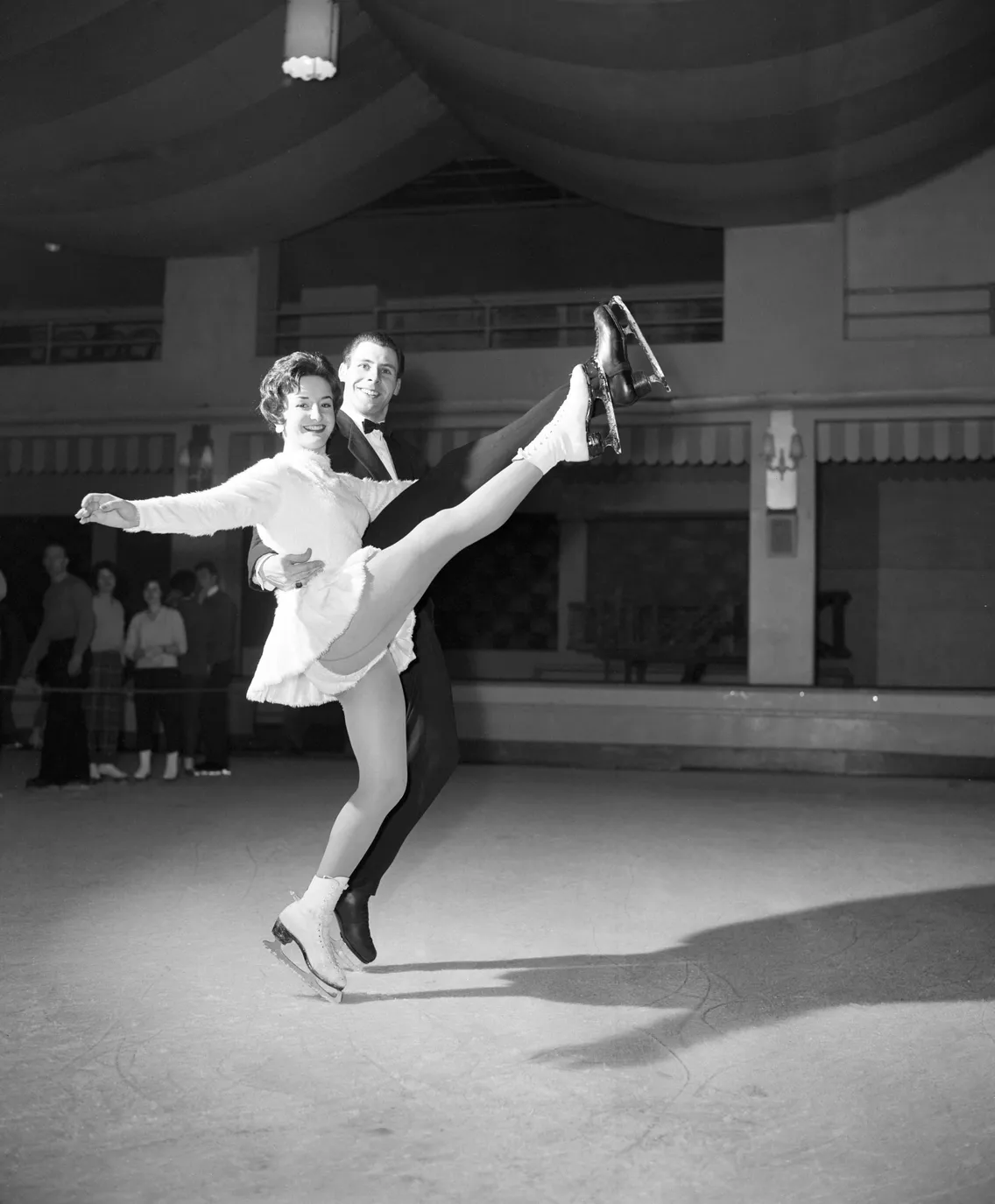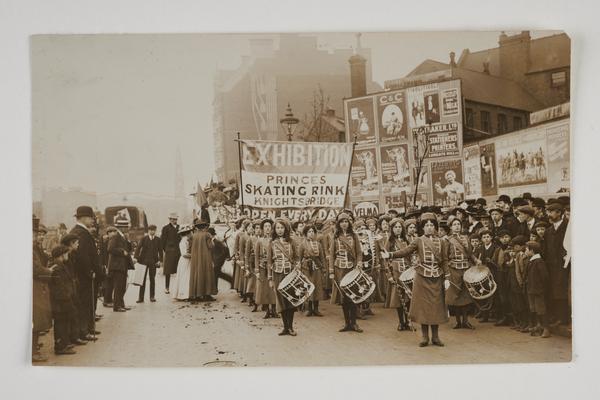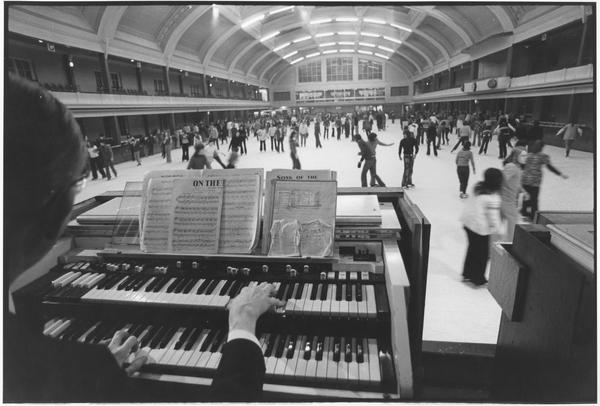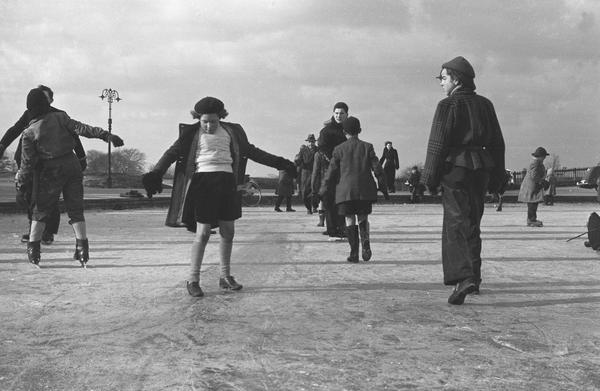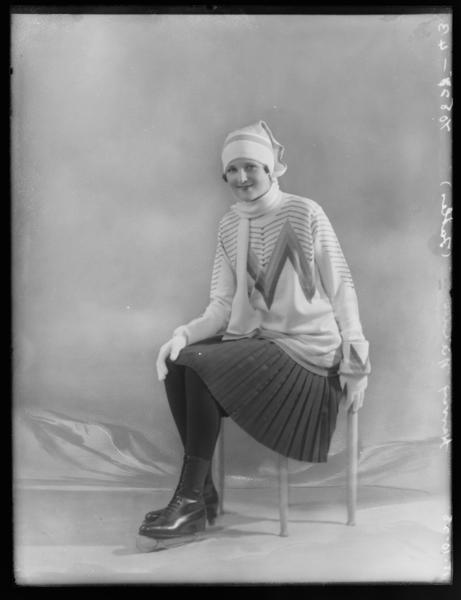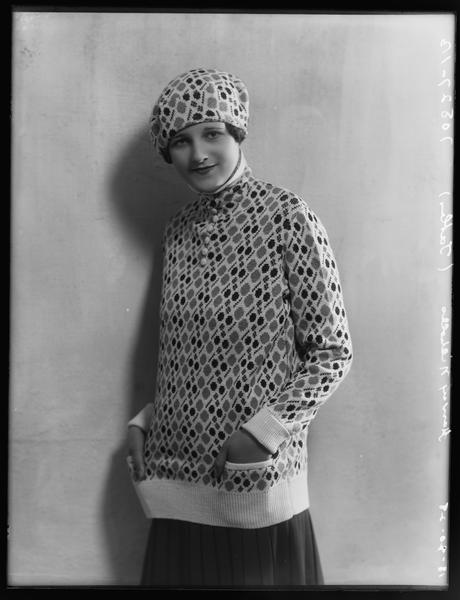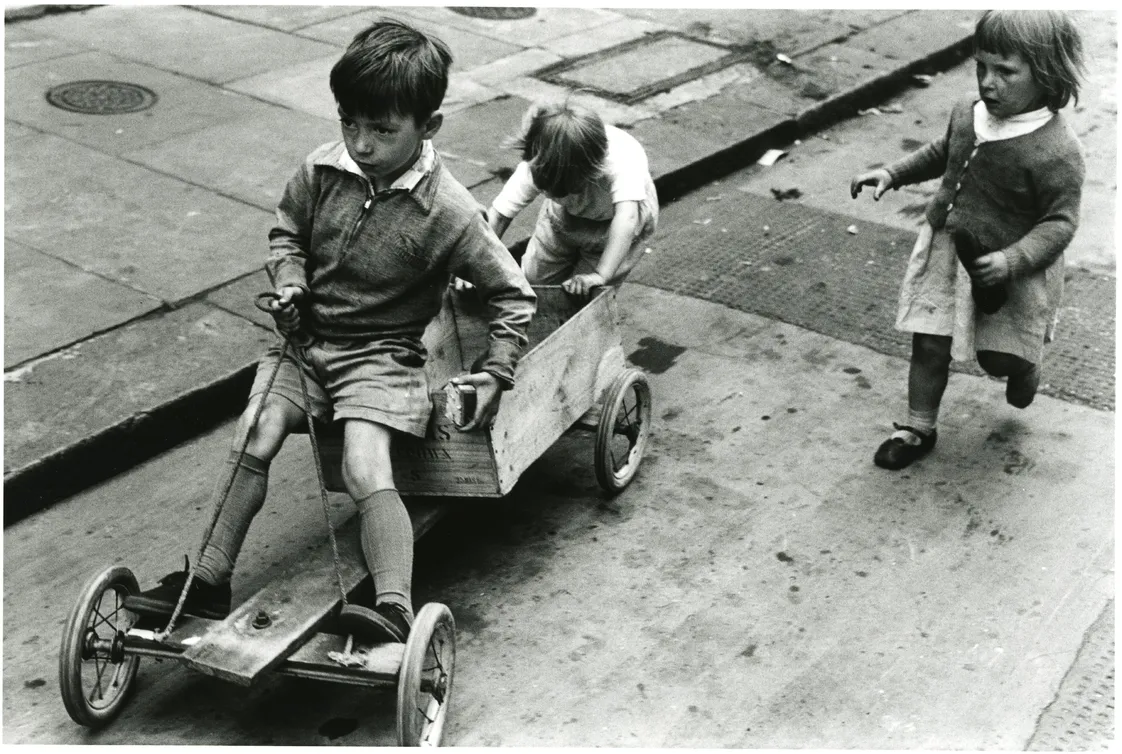Skating through the history of London’s ice rinks
Home to the world’s first ice rinks, London has a long and colourful history of indoor ice skating.
Since 1841
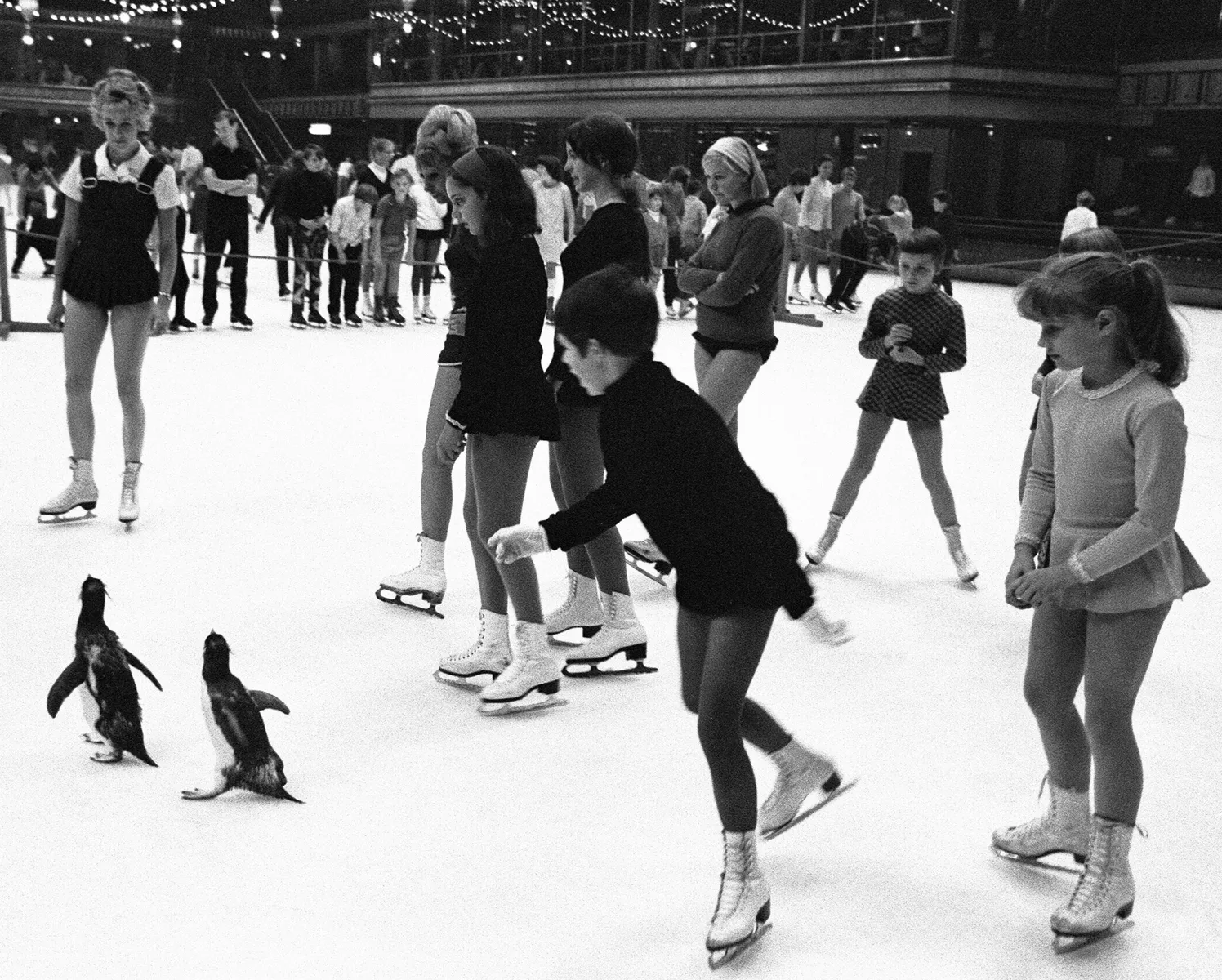
Special guests at Streatham Ice Rink.
How summer skating went from a dream to a reality
Ice skating has been a popular pastime for Londoners since at least the 1100s. But for centuries, people had to wait for the city’s lakes and rivers to freeze over – which came with some obvious safety hazards.
In the 19th century, some creative minds began experimenting with making their own ice so that skating could be enjoyed safely all year round. And these very first ice rinks were invented right here in London.
By the 1930s, an ice skating craze had gripped the capital with rinks popping up across the capital.
An ice rink made from… pigs?
In November 1841, Henry Kirk made the first, yet very small, artificial ice rink in Marylebone. He patented a mixture of salts and sulphate of copper plus – a key ingredient – “hog’s lard, to render it more slippery”. You can imagine what this might have smelled like.
Kirk scaled up his ‘Substitute for Ice’ to a 3000 ft Glaciarium that was launched in 1842 at the Baker Street Bazaar on Portman Square. But despite visits from royalty including Prince Albert, the novelty wore off. The ice was poor quality and was difficult and expensive to maintain.
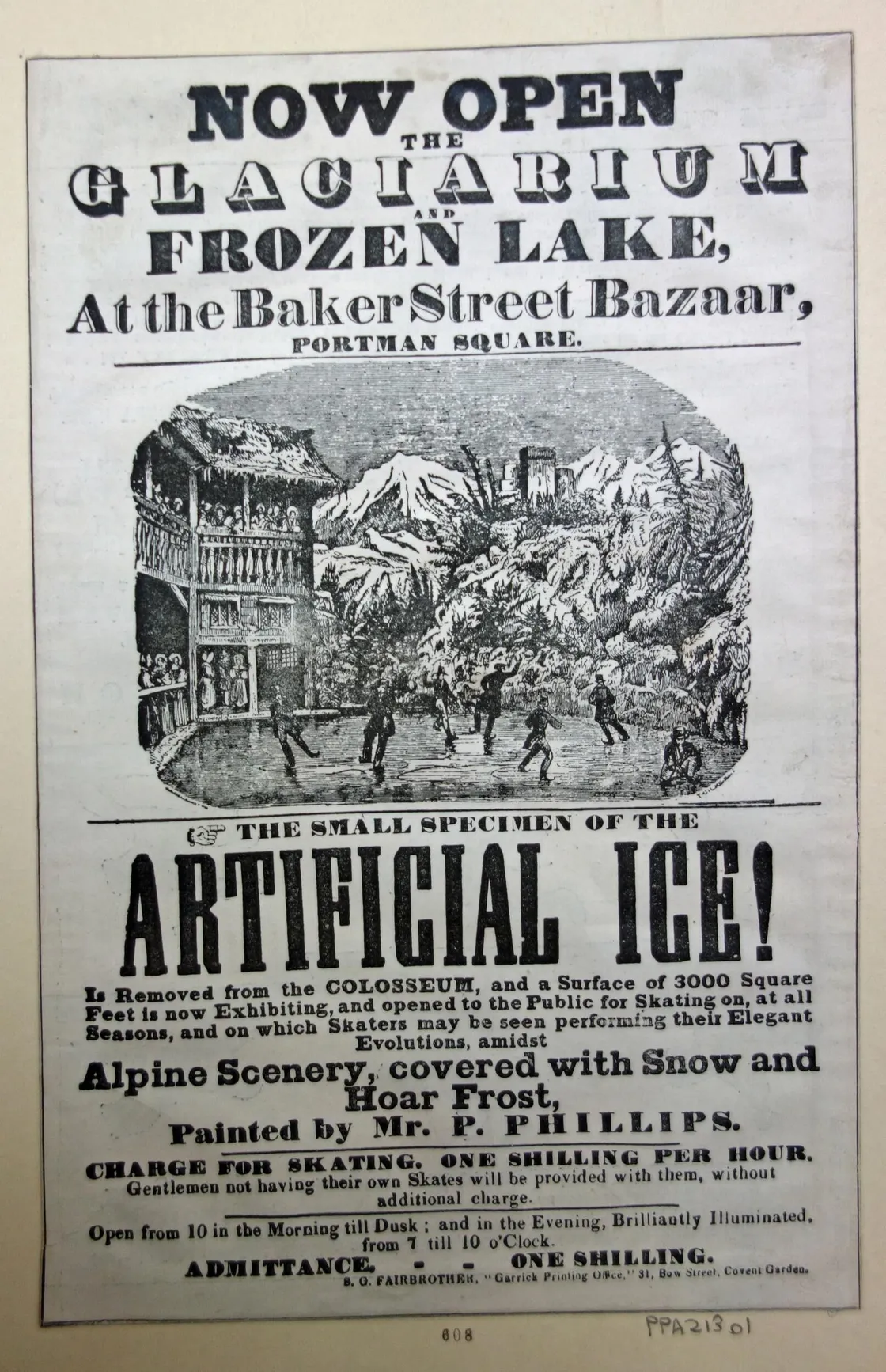
Henry Kirk's 1844 Glaciarium was made to resemble the Lake of Lucerne in Switzerland.
“Ice skating could be enjoyed even in the hottest summer”
Success with frozen water
In 1876, inventor John Gamgee opened the first permanent, mechanically frozen ice rink on the King’s Road in Chelsea. His Glaciarium used a floor of pipes that circulated a ‘freezing liquid’ that cooled a mixture of water and glycerine above.
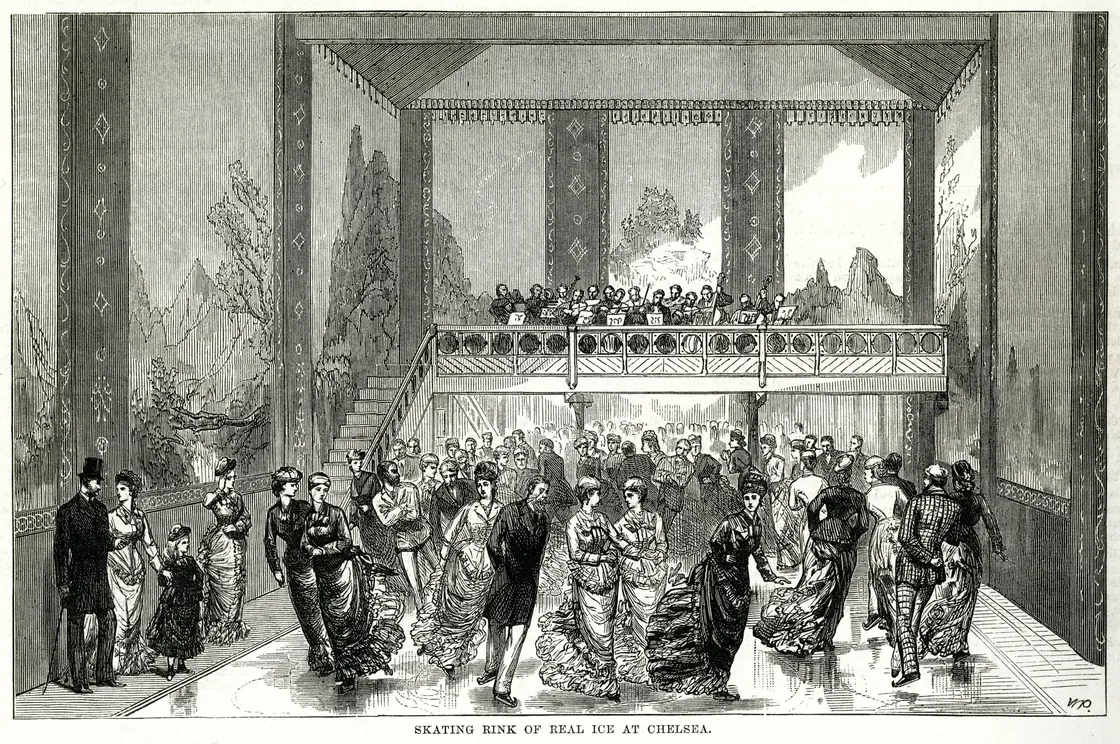
Skaters at Gamgee's Glaciarium in Chelsea, 1876.
It was an initial success. Ice skating could be enjoyed even in the hottest summer – if you were wealthy enough to have a membership. He opened another ice rink on a barge on the Thames at Charing Cross.
But Gamgee’s world-first rinks came with their own problems. Yes they didn’t smell of lard, but the intense cold produced a thick mist that put skaters off. Both rinks had closed by 1878.
The short-lived skating rinks of the early 1900s
Gamgee’s Glaciarium inspired more similar experiments and by 1900, there were 11 ice rinks in London.
The members-only Prince’s Skating Club, for example, opened in Knightsbridge in November 1896. It was home to one of the earliest British ice hockey teams. And it was the venue chosen for the first ever skating competitions in the 1908 Olympics. Prince’s even hosted the 1896 Women’s Exhibition where Suffragettes raised money for the Votes for Women campaign.
But like other London rinks at the turn of the century, it was relatively short-lived and the venue closed in 1917. Many venues were also put to other purposes during the First World War.
The interwar ice skating craze
From the late 1920s, London experienced a dramatic rise in indoor skating inspired by the members-only Ice Club that opened in Westminster in 1927. The first rink to open after the War, it was instantly popular and hosted British figure skating displays and competitions.
Two years later, the Grosvenor House Hotel opened on Park Lane and featured an ice skating rink downstairs. Princess Elizabeth, later Queen Elizabeth II, learned to skate there in 1933. But the rink was turned into an event space shortly after in 1935.
“fun and frolic on a frozen stage”
Daily Herald, 1937
By 1935, public rinks had opened in Richmond, Hammersmith, Bayswater, Streatham, Golders Green and Purley. The Richmond Ice Rink was the largest covered ice rink in the world at the time, measuring around 87 metres by 25 metres. Skating shows like the St Moritz at the Coliseum also delighted audiences with “fun and frolic on a frozen stage”.
Ice skating had become a pastime Londoners could enjoy as spectators and participants all year round – not just when the lakes occasionally froze over. Its popularity also inspired a rise of fashionable ice skating outfits, like these chic knitwear designs from 1928.

The buttons down this skirt gave wearers greater freedom of movement when skating.
The outbreak of the Second World War curtailed the indoor skating boom. Queens Ice Club in Bayswater, which opened in 1930, is the only rink from that time still in use today.

